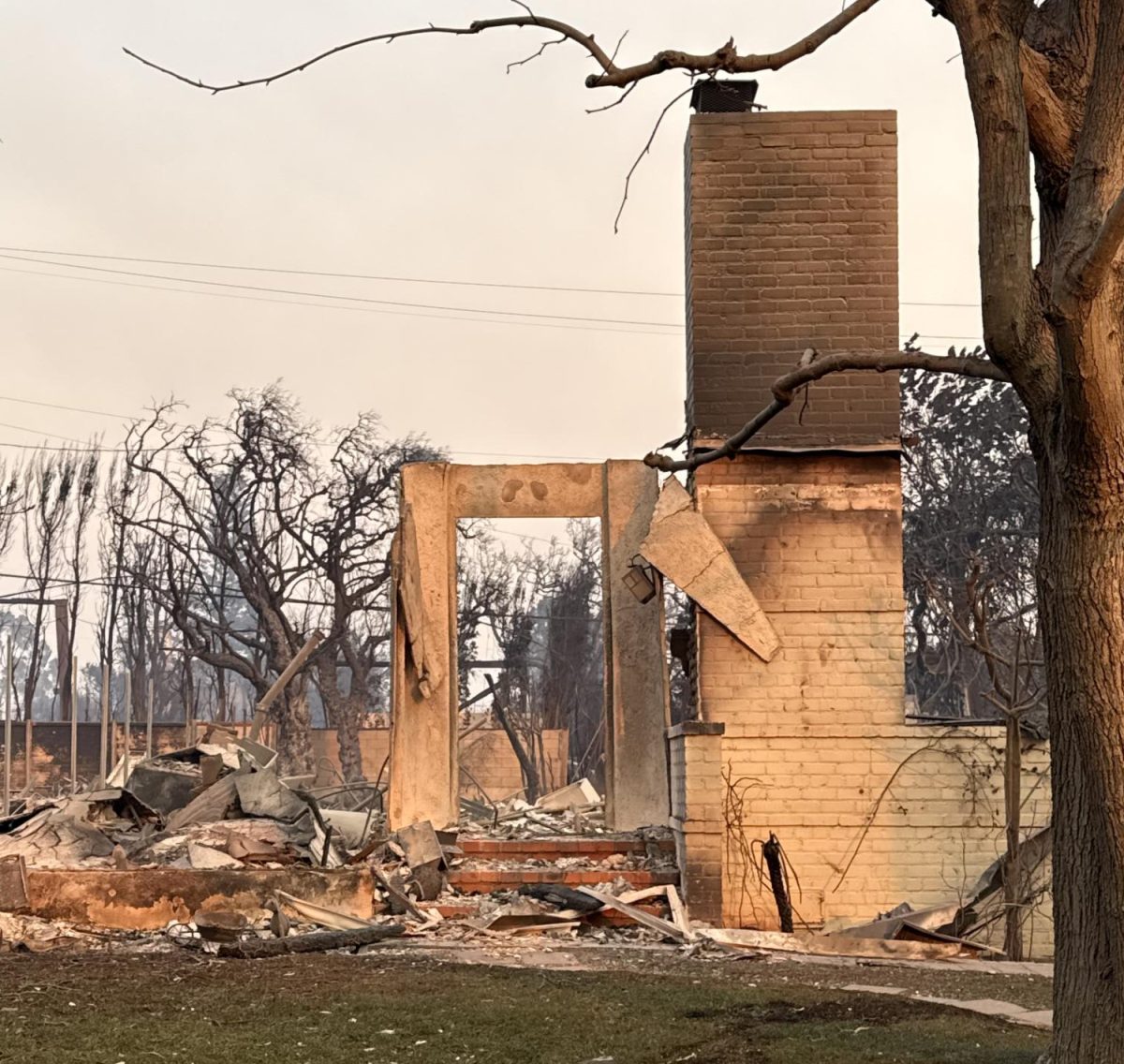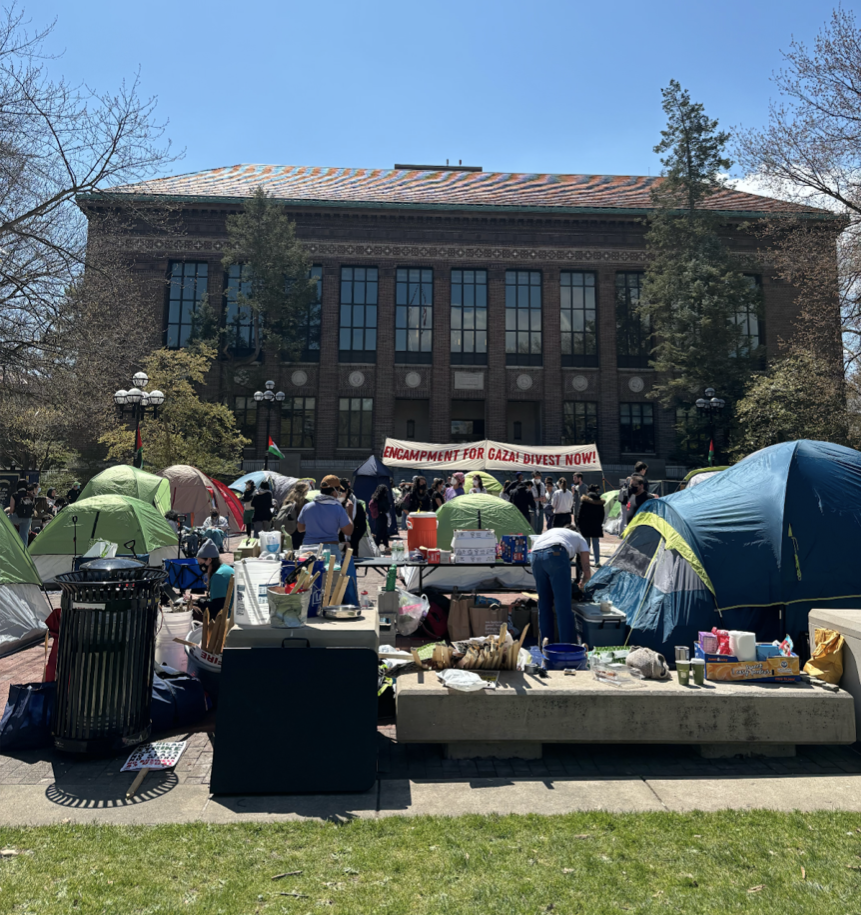Japan dumped 10,000 metric tons, about three-million gallons, of low-level radioactive water into the Pacific Ocean April 4, but the United States apparently has nothing to worry about. Though 10,000 tons is a lot of radioactive water, officials say it won’t have any effect on the 680,000,000,000,000,000-ton Pacific Ocean once the radioactive water spreads throughout the ocean.
“It’s like chlorine in a swimming pool,” said General Studies Principal and Science Department Chair Mr. Tranchi. “You put chlorine and acid—poison, basically—into the water, but it’s such a small amount that it doesn’t harm anyone. It might affect the fish that live right where they dumped the radioactive water.
“Will it result in three-eyed fish like in the opening of The Simpsons?” Mr. Tranchi continued. “No. But I’m not going to eat any fish from that part of the Pacific.”
Radioactivity can be dangerous because it can kill cells or alter their DNA. High-energy particles break off of radioactive iodine, which in turn has broken off from the power plant’s fuel rods. When these particles, like a more extreme version of heat or acidity, pass through proteins, they de-nature a protein, either changing or destroying its structure.
Once the structure of the protein deteriorates — or “mutates” — it no longer functions properly. Instead, the protein either ceases to function or functions differently. This is how radiation can lead to cancer, bone marrow problems, nausea, diarrhea, vomiting and intestinal issues.
Still, while many people are skittish about eating fish from Japan, it should be safe. According to Japan’s Nuclear and Industrial Safety Agency (NISA), nobody fishes in the area of the ocean closest to the dump.
Both the Japanese and U.S. governments are regulating the radiation levels in the fish on the market, just in case. All fresh fish you purchase should have its area of origin listed. Whether at a market or restaurant, if you ask, someone should know.
Japan began dumping the low-level radioactive water April 4 in response to a leak of highly radioactive water inside the Fukushima Daiichi Nuclear Power Plant, which was badly damaged in the area’s March 11 earthquake and tsunami. By early April, a 20-centimeter crack had opened in the concrete pit where the most highly radioactive water is stored. The crack was patched up with concrete April 6.
But the plant’s problems continue. Due to increased levels of radiation in the air and the discovery of radiation in water and vegetables nearby, the warning level was raised from Level Five to Level Seven, the most severe warning level (tinyurl.com/level7alert) o and the same level assigned to the disaster at the Chernobyl plant in Ukraine in 1986.
Also, there was a small fire April 11 at a switchboard near the nuclear reactors. Firefighters quickly got the fire under control, according to TEPCO (tinyurl.com/TEPCOfire). TEPCO publishes news updates about three times a day on its website, www.tepco.co.jp/en/index/html.
To avoid complications after the leak, TEPCO, with the permission of NISA, dumped low-level radioactive water to make room to transfer and store the highly radioactive water from the crippled plant.
Nuclear power plants, just like coal-burning and water energy plants, turn heat energy to electrical energy by using steam to spin turbines. Nuclear reactors split atoms in a process called fission, which produces a lot of energy in the form of heat, which is concentrated in the rods that undergo fission. Water circulates around the rods. Water has a high heat capacity, making it a great absorber of heat.
This water becomes radioactive when it touches the rods, and then it heats up another tank of water, which is separated from the rods so the new water won’t become as radioactive.
The second tank of water creates the steam the turns the turbines, which in turn convert the heat energy to electric energy. They can’t let the radioactive water’s steam turn these turbines because they would make the turbines radioactive.
What was leaking at the Fukushima plant was the more radioactive water. So plant personnel decided to dump the less radioactive water into the ocean to make room to store the highly radioactive water the leak was fixed.
Very small amounts of radioactive water may reach the California coast but they would be negligible and of no concern (tinyurl.com/LAisSafe).
What’s saving us, as Mr. Tranchi explained, is the process of diffusion — the tendency of substances to move from areas of high concentration to areas of low concentration. The ocean’s currents should eventually spread the radioactive water equally.
There should be no long-term effects in the ocean even near the power plant, Mr. Tranchi said, because of the scientific principal of half-life. Radioactive substances undergo radioactive decay so eventually the radioactive substances in the water will be harmless.
Until the radioactive water disperses throughout the ocean, the water closest to the dumping site does have low levels of radiation. TEPCO is constantly testing the radiation levels of the sea water, as are American naval vessels off the coast.
The approximate radioactive dose for adults in Japan who eat fish and seaweed every day for the next year is expected to be about 25 percent higher than the annual radioactive dose the general public is naturally exposed to anyway, according to NISA (tinyurl.com/BPNISA).
While this is above normal regulations, it is not a safety hazard, NISA says.
That’s good enough for Shalhevet students.
“If the Japanese authorities say it’s fine to eat then I trust them,” junior Josh Meisel said. “Plus, I don’t think my fish comes from there.”






